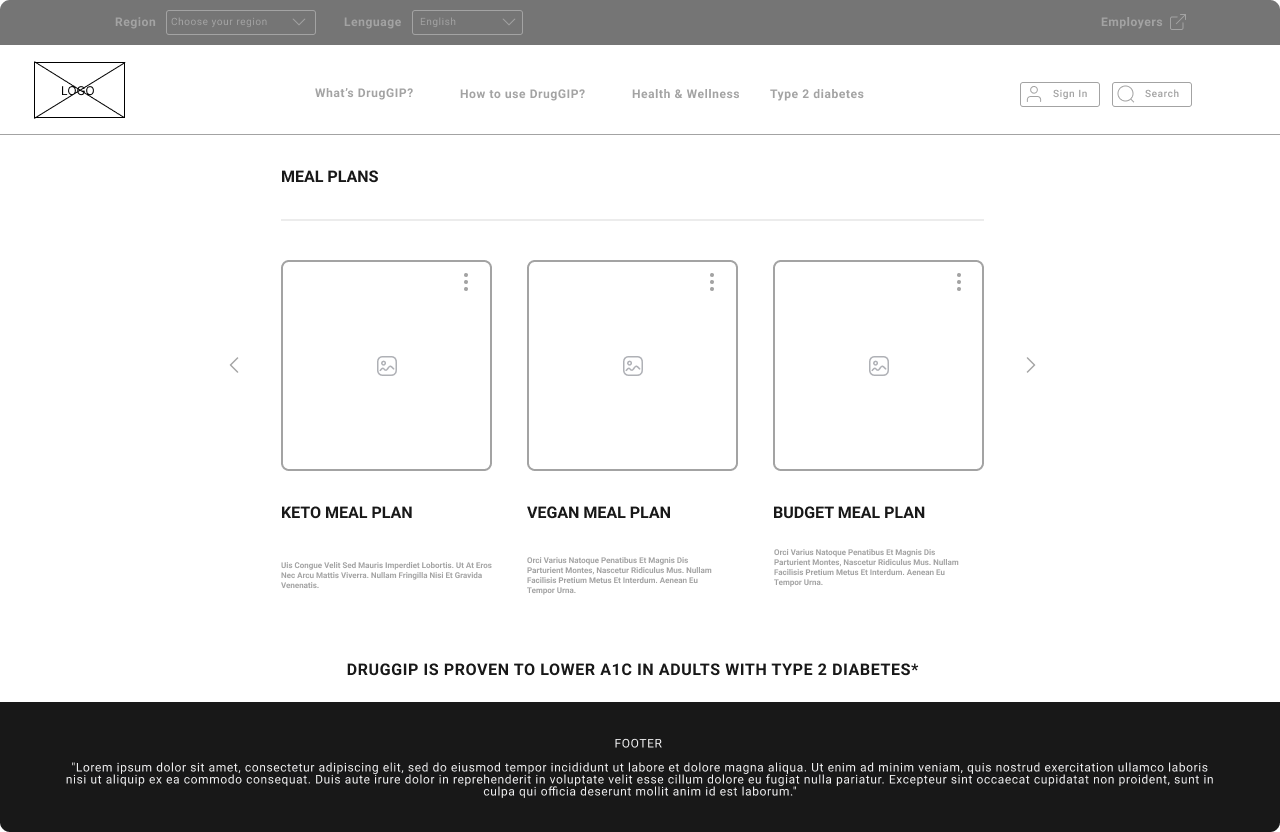Pharmaceutical company
Concept and creation UX/UI Design Solution Implementation Proposal for a pharmaceutical company with a patent for a drug that controls type 2 diabetes through the GIP molecule with a focus on gamification solution for users of new GIP drug
Client
Eli Lilly and Companie Pharmaceutical
Year
2023
The Design Process
Flowchart
Wireframes
UX/UI Design Solution Implementation Proposal for Pharma Company
1. Establishing the Product Team's Mission and Strategy:
Conduct a comprehensive review of Pharma Company's current product team mission, strategy, and KPIs.
Collaborate with key stakeholders to refine and align the product team's objectives with the company's long-term vision.
Introduce agile methodologies to enhance responsiveness and adaptability to changing requirements.
2. Streamlining Decision-Making Processes and Reducing Friction:
Facilitate cross-functional collaboration through streamlined communication channels and project management tools.Implement a project management framework to reduce friction, ensuring efficient decision-making and task execution.Identify bottlenecks and optimize workflows to achieve a 20% reduction in project friction.
3. Market Understanding and Product Strategy:
Conduct customer interviews, competitor studies, and usability tests to gain deep insights into user behaviors and preferences.
Develop market-based product strategies that align with user needs and differentiate Pharma Company's in the competitive landscape.Utilize user personas to guide design decisions and ensure a customer-centric approach.
4. Enhancing Customer Experience:
Implement a responsive design that ensures a seamless experience across various devices.Optimize website speed to provide a fast and efficient digital experience for users.Integrate user feedback mechanisms to continually enhance and simplify the overall customer journey.
5. UI/UX Design Deliverables:
Develop detailed wireframes, prototypes, and design specifications based on research findings.
Leverage best practices in information architecture to create an intuitive and user-friendly website structure.Prioritize accessibility standards to ensure inclusivity and cater to a diverse user base.urney.
6. Building Positive Client Relationships:
Strengthen and maintain positive long-term relationships with clients by understanding their strategic priorities and interests.Regularly engage with clients to gather feedback and insights, fostering a collaborative and transparent partnership.
7. Design Thinking Activities:
Lead design thinking activities, including journey mapping, co-design sessions, and prototyping.Conduct design critiques to evaluate design solutions and iterate based on feedback.Organize user testing sessions to validate design decisions and ensure alignment with user expectations.
8. Continuous Design Iteration and Collaboration:
Present design work to partners regularly, seeking feedback and advocating for customer needs.Foster a culture of continuous improvement by encouraging collaboration and open communication within the design team.Utilize agile methodologies to iterate on design solutions based on ongoing feedback and evolving requirements.
9. User-Centric Design Advocacy:
Prioritize accessibility features to ensure a positive experience for users with diverse abilities.Conduct regular accessibility audits to identify and address potential barriers to access.Advocate for user needs throughout the design process, ensuring that design decisions align with the best interests of Pharma Company's audience.Encourage a user-centric mindset within the organization, emphasizing the importance of empathy in design.
High fidelity models















